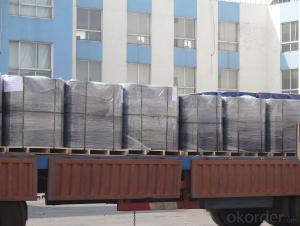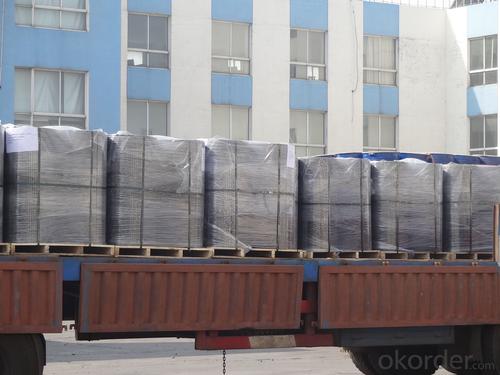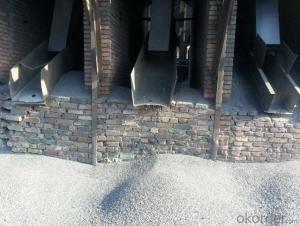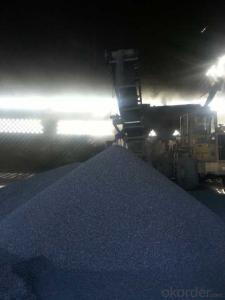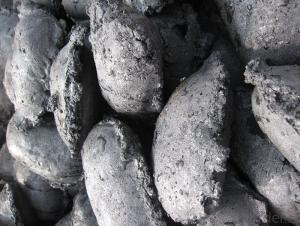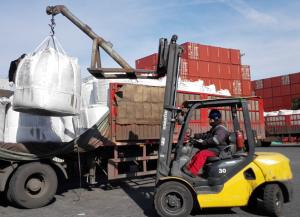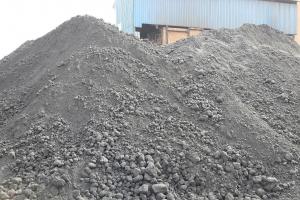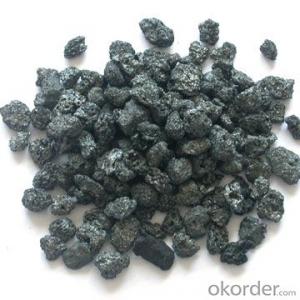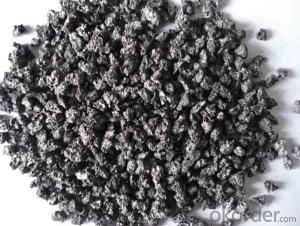Calcined Petroleum Coke 98.5%-Coke Fuel of CNBM in China
- Loading Port:
- Tianjin
- Payment Terms:
- TT OR LC
- Min Order Qty:
- 1 m.t.
- Supply Capability:
- 10000000 m.t./month
OKorder Service Pledge
OKorder Financial Service
You Might Also Like
1.Structure of Calcined Petroleum Coke Description
Calcined Petroleum Coke is made from raw petroleum coke,which is calcined in furnace at a high temperature(1200-1300℃).CPC/Calcined Petroleum Coke is widely used in steelmaking,castings manufacture and other metallurgical industry as a kind of recarburizer because of its high fixed carbon content,low sulfur content and high absorb rate.Besides,it is also a best kind of raw materials for producing artifical graphite(GPC/Graphitized Petroleum Coke) under the graphitizing temperature(2800℃).
2.Main Features of the Calcined Petroleum Coke
High-purity graphitized petroleum coke is made from high quality petroleum coke under a temperature of 2,500-3,500°C. As a high-purity carbon material, it has characteristics of high fixed carbon content, low sulfur, low ash, low porosity etc.It can be used as carbon raiser (Recarburizer) to produce high quality steel,cast iron and alloy.It can also be used in plastic and rubber as an additive.
3. Calcined Petroleum Coke Images

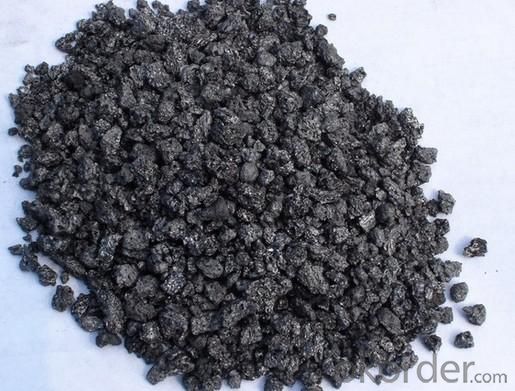
4. Calcined Petroleum Coke Specification
| Place of Origin: | China (Mainland) | Type: | Petroleum Coke | Sulphur Content (%): | 0.5 |
| Ash Content (%): | 0.4 | Fixed Carbon (%): | 98.5 | Moisture (%): | 2 |
| Volatile Matter (%): | 0.3 | Brand Name: | cnbm |
5.FAQ of Calcined Petroleum Coke
1). Q: Are you a factory or trading company?
A: We are a factory.
2). Q: Where is your factory located? How can I visit there?
A: Our factory is located in ShanXi, HeNan, China. You are warmly welcomed to visit us!
3). Q: How can I get some samples?
A: Please connect me for samples
4). Q: Can the price be cheaper?
A: Of course, you will be offered a good discount for big amount.
- Q: Power plant water treatment plant, there is a carbon removal device, the expert pointing out what the principle is it?
- The role of carbon dioxide removal in the process of ion exchange water treatment is to remove carbon dioxide from water, to reduce the load of anion exchange, to improve the economy of the water treatment system and the water quality of the effluent. The equipment uses blast degassing to remove the free carbon dioxide in the water. When the carbon dioxide content (Alkalinity) in the influent is greater than 50mg / 1, the carbon dioxide removal device is more economical and reasonable in the stage bed cleaning system. Behind the water treatment process in general on the hydrogen ion exchanger, as long as the choice of the right, the carbon remover, water residue of carbon dioxide is less than or equal to 5mg/L.
- Q: What is the density of carbon steel and alloy steel?
- Chromium molybdenum aluminum steel 7.65Tungsten 9 high speed tool steel 8.3Tungsten 18 high speed tool steel 8.7High strength alloy steel 7.82Bearing steel 7.81Stainless steel 0Cr13, 1Cr13, 2Cr13, 3Cr13, 4Cr13, Cr17Ni2, Cr18, 9Cr18, Cr25,, Cr28 7.75Cr14, Cr17 7.70Cr18Ni9, 1Cr18Ni9, Cr18Ni9Ti, 2Cr18Ni9 7.851Cr18Ni11Si4A1Ti 7.52Stainless steel 1Crl8NillNb, Cr23Ni18 7.92Cr13Ni4Mn9 8.53Cr13Ni7Si2 8
- Q: What is the relationship between carbon and climate change?
- The relationship between carbon and climate change is that carbon dioxide (CO2), primarily emitted through human activities such as burning fossil fuels, is a greenhouse gas that contributes to the warming of the Earth's atmosphere. The excessive release of CO2 traps heat, leading to a rise in global temperatures and subsequent climate change impacts such as melting ice caps, rising sea levels, extreme weather events, and disruptions to ecosystems.
- Q: What is the effect of carbon equivalent on welding?
- The greater the carbon equivalent, the greater the tendency to harden the welding material, and the cold crack is likely to occur in the welding area.Carbon equivalent is related to hardening and cold crack tendency due to welding heat:When the carbon equivalent is large, the martensite structure which is easy to harden in the welding heat affected zone is sensitive to crack and hydrogen quenching. Hardening causes more lattice defects. In the condition of stress and thermal imbalance in the weld, the lattice defect is called the crack source, which increases the tendency of cold crack in the weld.
- Q: How does carbon affect water quality?
- Carbon can affect water quality by altering its pH level and reducing its oxygen content. Additionally, carbon can react with other chemicals present in water to form harmful compounds, compromising its overall quality and making it unsuitable for consumption and aquatic life.
- Q: Why use carbon batteries for alarm clocks?
- Look at your clock is what kind of, some nickel battery (batteries) can also be a bit expensive. Lithium battery. And what in fact almost never mind, as long as you start voltage alarm on the line. You said carbon battery is called alkaline battery his standard voltage is 1.5V the charging the battery is generally 1.2V. to this problem is not a reward.
- Q: What are the impacts of carbon emissions on biodiversity?
- Carbon emissions have significant impacts on biodiversity. Increased levels of carbon dioxide in the atmosphere contribute to climate change, which disrupts ecosystems and threatens biodiversity. Rising temperatures, altered precipitation patterns, and more frequent extreme weather events can lead to habitat loss, shifts in species distribution, and reduced reproductive success. Moreover, ocean acidification resulting from carbon emissions poses a threat to marine ecosystems, affecting coral reefs and other vulnerable species. Overall, carbon emissions have detrimental effects on biodiversity, potentially leading to the extinction of numerous species and the destabilization of ecosystems.
- Q: What are fossil fuels and how are they formed?
- Fossil fuels are natural energy resources derived from the remains of ancient plants and animals that lived millions of years ago. They are formed through a long process involving the decomposition and conversion of organic matter under high pressure and temperature over geological time. This transformation results in the formation of coal, oil, and natural gas, which are the primary types of fossil fuels.
- Q: What are the effects of carbon emissions on the stability of urban infrastructure?
- Urban infrastructure stability is significantly impacted by carbon emissions. The atmosphere is polluted with carbon dioxide and other greenhouse gases from different sources like industrial activities, transportation, and energy production, resulting in climate change. This, in turn, poses numerous challenges to urban infrastructure. Among the primary effects of carbon emissions on urban infrastructure stability is the increased frequency and severity of extreme weather events. Climate change leads to more intense heatwaves, storms, hurricanes, and flooding, causing substantial damage to buildings, roads, bridges, and other infrastructure components. Higher temperatures also cause materials to expand and contract, resulting in structural issues and reduced durability. Additionally, rising sea levels caused by carbon emissions contribute to the melting of polar ice caps, putting coastal cities at risk of flooding and erosion. This threatens critical infrastructure in these areas, such as ports, water treatment facilities, and transportation systems. The stability of urban infrastructure is compromised as sea levels continue to rise. Carbon emissions also impact energy supply and demand, affecting urban infrastructure stability. Climate change leads to extreme weather events that disrupt power grids and energy infrastructure, resulting in blackouts and service disruptions. Moreover, the increased demand for cooling systems due to rising temperatures can strain existing infrastructure and overload the electrical grid. Furthermore, carbon emissions contribute to air pollution, which negatively affects the health and well-being of urban populations. Poor air quality leads to respiratory and cardiovascular diseases, impacting the workforce and productivity. This indirectly affects the stability of urban infrastructure, as a healthy and productive population is crucial for the functioning of cities. To mitigate the effects of carbon emissions on urban infrastructure stability, various measures can be implemented. These include transitioning to renewable energy sources, improving energy efficiency in buildings and transportation, implementing sustainable urban planning strategies, and investing in climate-resilient infrastructure. These actions can reduce carbon emissions and build infrastructure capable of withstanding the challenges posed by climate change, ultimately ensuring the stability and resilience of urban areas.
- Q: What is carbon dating?
- Carbon dating is a scientific method used to determine the age of organic artifacts, such as ancient human remains or archaeological objects. It relies on the fact that all living organisms contain a small amount of radioactive carbon-14, a rare isotope of carbon. When an organism dies, it no longer takes in carbon-14, and the amount of this isotope slowly decreases over time through radioactive decay. By measuring the ratio of carbon-14 to carbon-12 in a sample, scientists can estimate how long it has been since the organism died. This technique provides accurate age estimates up to around 50,000 years, making it particularly valuable for dating artifacts from prehistoric times. Carbon dating has revolutionized the field of archaeology and has been instrumental in understanding the timelines of human history and the evolution of various civilizations.
Send your message to us
Calcined Petroleum Coke 98.5%-Coke Fuel of CNBM in China
- Loading Port:
- Tianjin
- Payment Terms:
- TT OR LC
- Min Order Qty:
- 1 m.t.
- Supply Capability:
- 10000000 m.t./month
OKorder Service Pledge
OKorder Financial Service
Similar products
Hot products
Hot Searches
Related keywords
